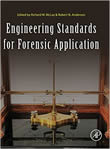5/8/2014·
Food & Beverage
Outbreaks Where Food Workers Have Been Implicated in the Spread of Foodborne Disease. Part 7. Barriers To Reduce Contamination of Food by Workers
By:
Dr. Ewen Todd
Contamination of food and individuals by food workers has been identified as an important contributing factor during foodborne illness investigations. Physical and chemical barriers to prevent microbial contamination of food are hurdles that block or reduce the transfer of pathogens to the food surface from the hands of a food worker, from other foods, or from the environment. In food service operations, direct contact of food by hands should be prevented by the use of barriers, especially when gloves are not worn. Although these barriers have been used for decades in food processing and food service operations, their effectiveness is sometimes questioned or their use may be ignored. Physical barriers include properly engineered building walls and doors to minimize the flow of outside particles and pests to food storage and food preparation areas; food shields to prevent aerosol contamination of displayed food by customers and workers; work clothing designated strictly for work (clothing worn outdoors can carry undesirable microorganisms, including pathogens from infected family members, into the work environment); and utensils such as spoons, tongs, and deli papers to prevent direct contact between hands and the food being prepared or served. Money and ready-to-eat foods should be handled as two separate operations, preferably by two workers.














